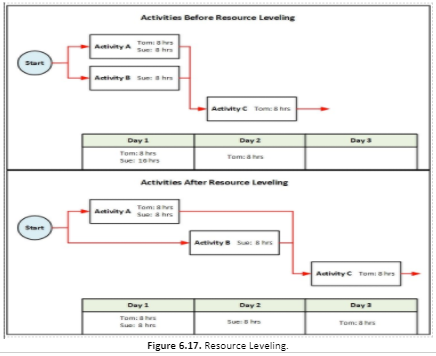
Data analysis techniques that can be used for this process include but are not limited to:
-
*What-if scenario analysis.
-
What-if scenario analysis is the process of evaluating scenarios in order to predict their effect,
-
positive or negative, on project objectives. This is an analysis of the question, “What if the situation represented by scenario X happens?”.
-
*Simulation.
-
Simulation models the combined effects of individual project risks and other sources of uncertainty
-
to evaluate their potential impact on achieving project objectives.
-
The most common simulation technique is Monte Carlo analysis,
-
in which risks and other sources of uncertainty are used to calculate possible schedule outcomes for the project.
-
*LEADS AND LAGS
Leads and lags are refinements applied during network analysis to develop a viable schedule by adjusting the start time of the successor activities.
-
*SCHEDULE COMPRESSION
Schedule compression techniques are used to shorten or accelerate the schedule duration without
reducing the project scope in order to meet schedule constraints, imposed dates, or other schedule objectives.
-
*PROJECT MANAGEMENT INFORMATION SYSTEM (PMIS)
Project management information systems include scheduling software that expedites
the process of building a schedule model by generating start and finish dates based on the inputs of activities,
network diagrams, resources, and activity durations.
-
*AGILE RELEASE PLANNING
Agile release planning provides a high-level summary timeline of the release schedule
(typically 3 to 6 months) based on the product roadmap and the product vision for the product's evolution.